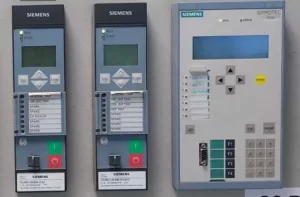Stub protection uses a simple overcurrent protection system to protect the transmission line when the line isolator remains open.
Stub protection works mainly in a one-and-a-half breaker busbar scheme. In this scheme, two lines connect to two buses through three circuit breakers, as shown in the diagram. When one line shuts down or switches off, the other line connects only through one breaker to a single bus. For system stability, the line must stay connected to both buses.
In this case, when 1 no. line gets shutdown, its Main and Tie Circuit Breaker will close after opening the line isolator as shown in the diagram. In this process, the other line is allowed to connect to both the buses.

Why STUB Protection?
The distance protection needs line voltage and current inputs to operate. As the line is under shutdown and the line isolator is in open condition, there is no voltage in the distance relay. In this case, to protect the area as marked in the diagram, we need STUB Protection.
Working Principle:
STUB protection is the function of distance relay. When the distance relay gets the open status from the line isolator, it will block the distance protection and enable the STUB protection to protect the area. Under STUB protection, the minimum fault current limit is set above the full load current of the line, and delay time is set as zero.
TThe fault current for stub protection must stay above the full load current of the line. Otherwise, if the isolator sends a wrong status to the relay during normal operation, stub protection will activate and trip the line.
Engineers set the delay time to zero or less than the Zone-2 time delay of the lines connected to the bus. If the system does not isolate the fault instantly, other connected lines under Zone 2 will detect it, and all connected lines may trip.


In Siemens relays it is a differential protection not OC and as you mentioned it requires disconnector open status to be activated.
but I have a question if the line is protected with line differential is this function is required ?